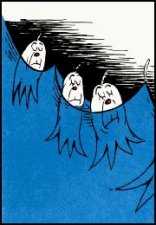
CONTENTS
|
Editing for Psychoanalysis Eve Golden, M.D. |
On Beyond Metaphor
In the places I go there are things that I see
That I never could spell if I stopped with the Z.
I'm telling you this 'cause you're one of my friends.
My alphabet starts where your alphabet ends!
Conrad in On Beyond Zebra
Metaphor is, like, seriously trendy in psychoanalysis these days; I myself edited two books and a major paper on that subject in a single year, and if you multiply that by the international psychoanalytic editor population, the total takes the breath away. But there are some reckless women who wear (gasp) red to New York dinner parties, and I like to think that a few avant-garde analysts may be starting to chafe a little at the metaphor bit. As Anne Hollander (1978) has made clear, the very fact of a fashion whets the appetite for change. And some of us like to be different just for the hell of it. Luckily for those looking to establish a signature style in tropes, the rhetorical alphabet doesn't end with metaphor. Figures of speech abound to beguile the Conrads of the psychoanalytic world.
How about aporia, for example? Aporia is talking about how to talk about something—as in, "I hate her so much, I don't know where to start." Right up an analyst's alley. (See also Stenger 1991.)
There's aposiopesis—talking about not being able to talk; a failure of speech due to emotion: "When I think of what he did to me that day—Oh, God, I can't talk about it!"
Or catachresis, the apparent misuse of words—that "apparent" being the analyst's bread and butter. . .
And periphrasis—the use of many words for few; circuitous or indirect speech. (Oops, bad idea, Eve. Let's skip that one.)
Plenty more where those came from, too. Apostrophe, irony, litotes, synecdoche, all the way to—finally—praecisio. Nothing at all.
Silence.
At last.
Even those who didn't misspend their youths the way I did, studying Latin and Greek, will find instruction, insight, and a whole lot of fun in Arthur Quinn's Figures of Speech: 60 Ways to Turn a Phrase. Dr. Quinn was Professor of Rhetoric at Berkeley. I distrust some of his definitions, but the examples are wonderful and I think he has more than a little in common with my beloved Dr. Seuss. (The dour occupants of the upper left-hand corner, in case you have a poor memory for faces, are our friends the Floob-Boober-Bab-Boober-Bubs, who bounce in the water like blubbery tubs.)
____________________________________________________
Geisel, T.S. (Dr. Seuss). (1955). On Beyond Zebra. New York: Random House.
Hollander, A. (1978). Seeing Through Clothes. New York: Viking.
Quinn, A. (1982). Figures of Speech: 60 Ways to Turn a Phrase. Salt Lake City: Gibbs M. Smith.
Strenger, C. (1991). Between Hermeneutics and Science. Madison CT: IUP.
